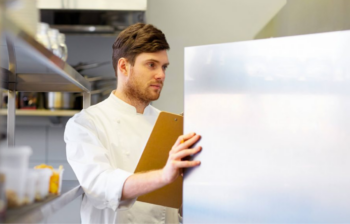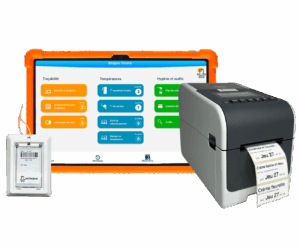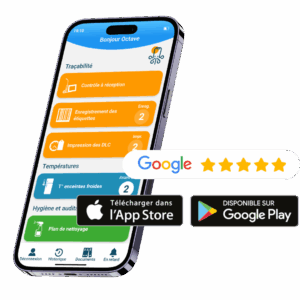HACCP, fridge temperature: best practice guide
Température
⏳ Temps de lecture : 4 min
? Mis à jour le : 10/06/2024
Summary
- When to check the temperatures of each fridge or freezer?
- How to check the temperature according to the HACCP method?
- How do wireless temperature loggers work?
- HACCP fridge temperature sheet to print
- How long do I keep my temperature readings?
- How do I note a corrective action on the HACCP fridge temperature sheet?
- HACCP food storage temperature guide
- Quick cooling: temperature control
- Temperature control on a rethermalization
- How are serving temperatures controlled?
- The temperature control of a hot product
- Cold product: temperature control
HACCP Guide for Monitoring Refrigerator & Cold Room Temperatures ?
You must regularly check the temperature of your refrigerators and freezers to ensure that the goods stored inside have not experienced a break in the cold chain. ?
In this practical guide, we help you implement the HACCP method for your temperature recordings in your restaurant, whether you do it on paper or with HACCP software. ?
When should you check the temperatures of each fridge or freezer? ?
It is recommended to check them before each service. In practice, this is one of the first checks you should do when starting your shift. ?
Go around your cold storage units to ensure none have been damaged. Also verify that the goods inside have not experienced a break in the cold chain. ?
How to check temperature according to the HACCP method? ?
Temperature control can be done using an independent thermometer stored inside your cold storage unit. You should not rely solely on the temperature displayed on your cold unit, as this reading is not reliable enough.
You must record this temperature reading on a temperature control sheet or by using an HACCP software like Octopus HACCP. ?
How do wireless temperature loggers work?
If you don’t want to take temperature readings manually, you can equip your cold storage units with wireless temperature loggers connected to HACCP software.
Easy to install, these connected sensors send you SMS alerts as soon as a temperature issue occurs.
Printable HACCP fridge temperature log sheet
After recording your fridge temperature, you must log it either on a fridge temperature control sheet or via HACCP software like Octopus HACCP. ✅
If you prefer to record your fridge temperature readings on paper, you can download it here. ?
How long should I keep my temperature records? ⏳
How to record a corrective action on a HACCP fridge temperature log sheet?
Food storage temperature guide according to HACCP method?
Rapid cooling: Temperature control?
- If your preparation comes out of the oven at 90°C ?, the 2-hour count starts when your preparation reaches the 63°C threshold.
- Are you preparing food at room temperature? ? The same rule applies: you must cool it in less than 2 hours.
- Don’t have a blast chiller? ? You can cool your preparations in an ice bath, for example.
Temperature control during food reheating ❄️
How is service temperature monitoring performed?
Hot product temperature control ♨️
A hot product must be maintained at minimum 63°C.
If during your temperature check the critical threshold of 63°C is not met, and consumption is imminent, the product may still be consumed. For example, if less than one hour after cooking. ?
A hot product must not remain below 63°C for more than 2 hours, otherwise it becomes susceptible to bacterial growth.

Cold product: Temperature control ❄️
Never miss a reading – record temperatures on mobile






